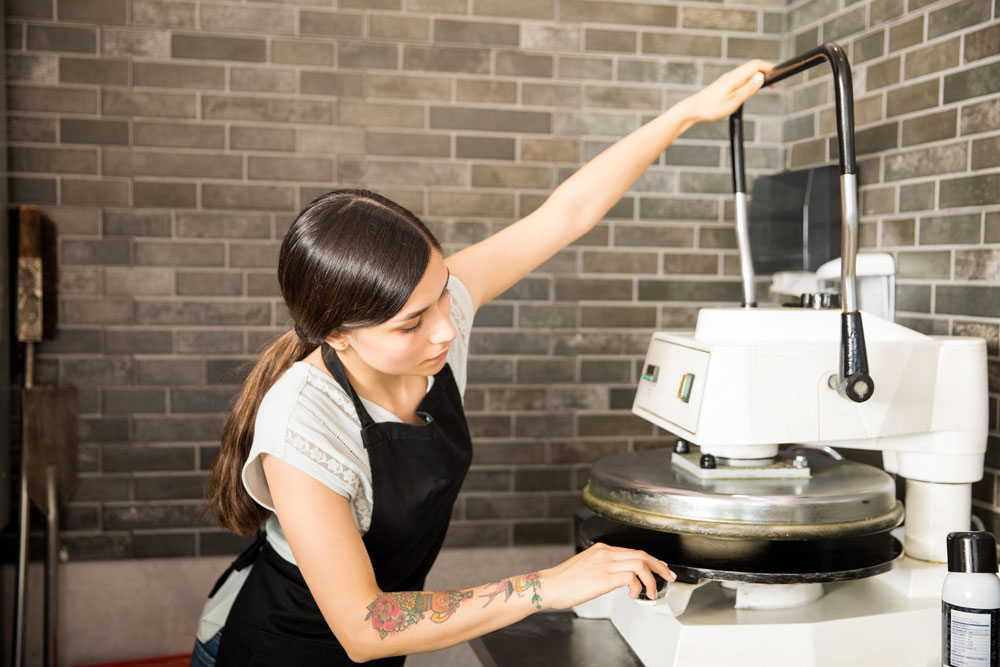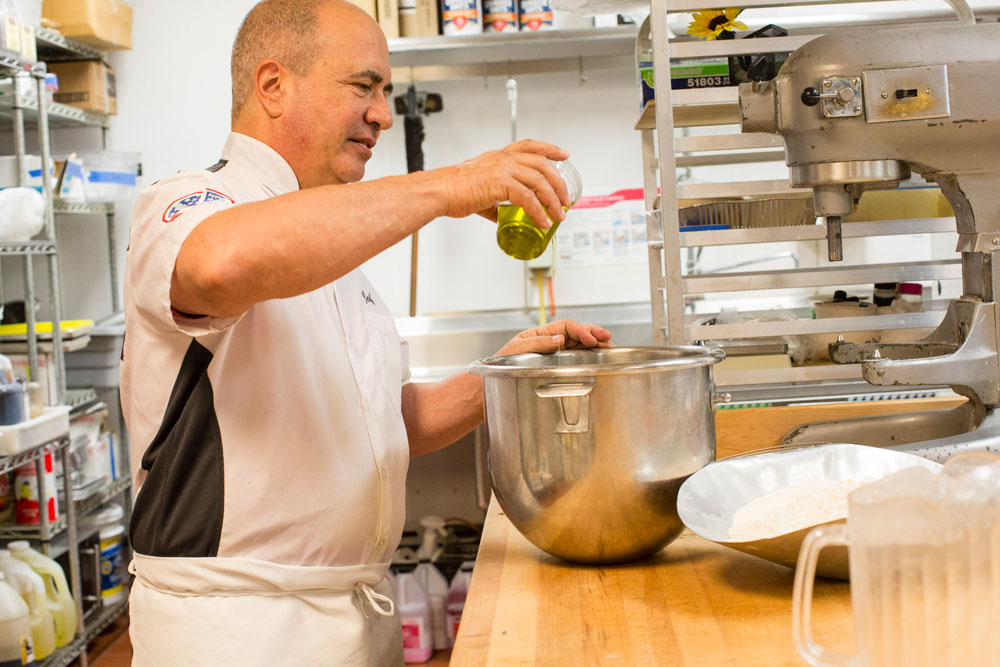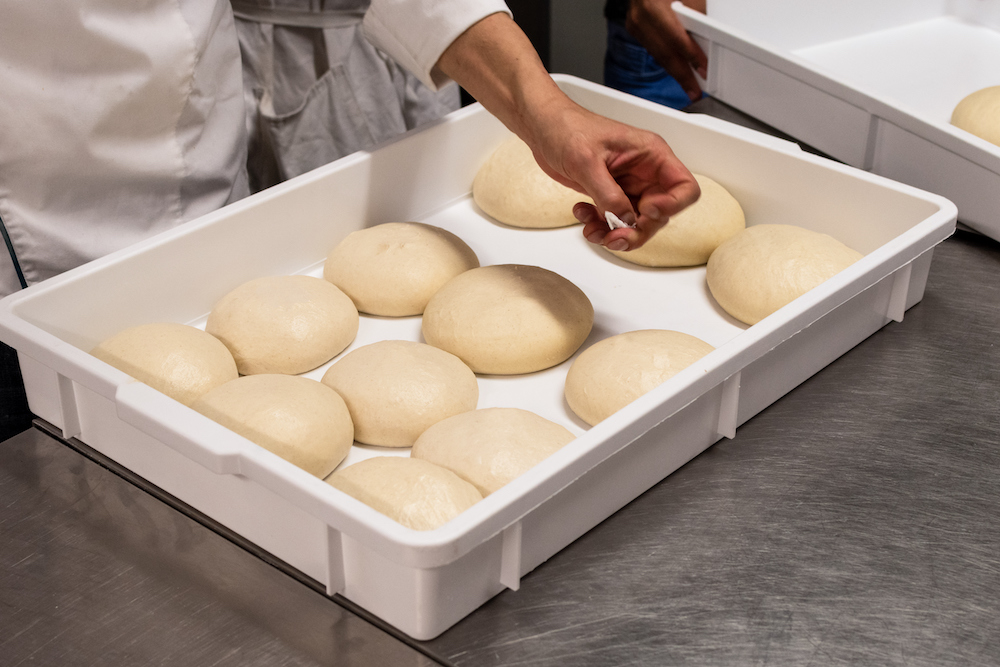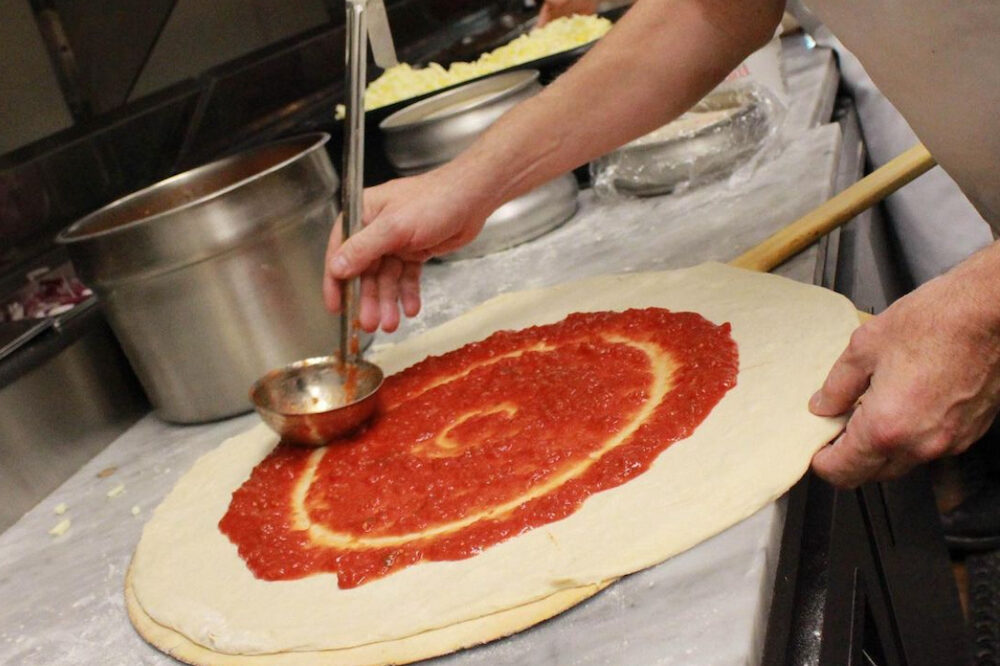- Dough presses can speed up production in your pizza kitchen and create more consistent results.
- Keep in mind that you might need to change your dough formula if you’re working with a dough presser.
Related: A newcomer’s guide to pizza dough equipment
When you’re working with a higher-volume operation—or if you simply can’t find enough skilled labor to toss and open dough by hand—dough presses can be an excellent addition to your kitchen. Whether you want to create cracker-thin crusts or fluffy focaccias, they can speed up production and create more consistent results. After all, you simply grab a dough ball, place it on the press, clamp the machine’s platens closed (you can choose a manual or automatic model), and voilà! The pizza is ready for employees to top.
Easy, right? Yes, for the most part—but there are certain factors you’ll want to keep in mind when working with dough presses. Here, we offer up a few pointers that will help operators achieve optimal results.
Running Hot and Cold
Dough presses can work with or without the application of heat. A hot press works with a heated head (top plate) and sometimes can have a heated bottom plate as well. If the press has a heated head only, the dough’s bottom will remain tacky after pressing, so it’s best moved onto a tray or into a pan—ideal for thick-crust pan styles—where it will more quickly proof, thanks to the introduction of heat to the dough.
If both the top and bottom plates heat up, the dough will bake with a crisper result than hand-tossed types or other methods of stretching dough. Additionally, the speed of browning will be reduced, allowing for a comparatively longer or higher-temperature bake without the danger of burning. Therefore, presses of this kind can be ideal for creating cracker-like crusts with a uniform baked thickness, while the heat applied to both sides of the dough piece allow multiple pressed pieces to be stacked without sticking together.
Cold presses, meanwhile, are typically used to press a dough twice in order to stretch the dough to its full desired diameter. The dough can then be transferred to a tray or pan—possibly one with raised circular formations on the bottom to add grip, which can be coated with oil to create an appealing fried-bottom effect. In the pan, the dough can be allowed to proof for up to one hour, until the desired crust thickness is achieved. In fact, cold presses are considered ideal for focaccia, since this type of bread product doesn’t require a raised circumference like a pizza crust. (For pizzas with pronounced raised edges, try a hot press instead.)
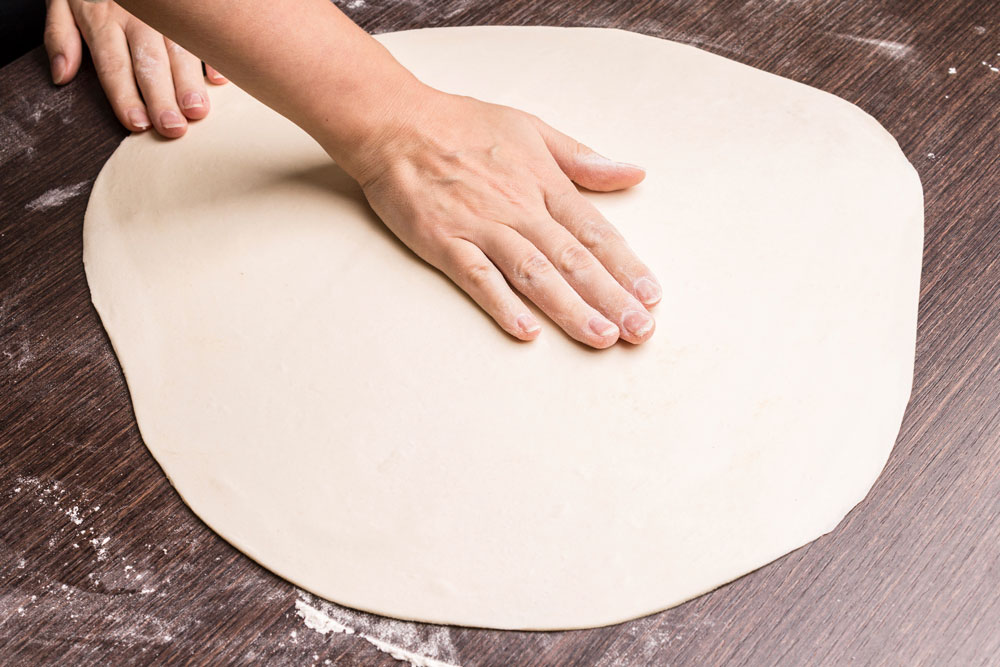
Formulation Notes
When using a dough press, you may need to change your dough formula. Especially if using a cold press, dough benefits from being softer, with more “flow,” which will help prevent tears or excessive snapback after the pressing process. As the late, great Dough Doctor, Tom Lehmann, taught, a softer dough can be created through high water absorption, high finished dough temperatures (90° to 100°F), and/or the use of reducing agents such as L-cysteine, glutathione, deodorized vegetable powder, or sodium metabisulfite. After pressing, this kind of dough will have a breadlike texture, but, again, don’t expect a raised-edge result from softer doughs of this kind.
Related: How to achieve the perfect dough mix
On the other hand, if you’re working with a hot press, the optimal formula will probably include some reducing agent (similar to the cold pressed dough). But the desired dough temperature of the hot pressed dough is similar to that of a regular pizza dough, in the range of 80° to 90°F. After pressing, you’ll notice that the dough has an open, coarse, uniform structure, which helps create a more uniform baking process, too.

A hot press can be used to create pronounced raised edges on your pizza. Image courtesy Getty Images
Latest and Greatest
In some pizzerias, stretching dough is not just a job, but an art. For whatever reason, however, an operation that prides itself on its made-by-hand principles may need to streamline the pizza assembly process via machines.
To enjoy the best of both worlds, the OperaPrima, created by Ecor International S.p.A. and unveiled at last October’s HostMilano trade show, dubs itself the “pizza stretcher that replicates the handcrafted work of a true pizzaiolo.” The machine slightly differs from a traditional dough press in that mechanical handles open each dough, while a cold pressing process is designed to open the dough more gently—while still allowing for a defined edge and a customizable diameter. Ultimately, the machine can be used to cold press doughs that use different types of flour, and to prepare different styles of pizza, including Neapolitan, Roman or classic.
Even if you’re looking at investing in a more traditional dough press, today’s manufacturers offer up a wide range of features to help in the pizzeria kitchen: nonstick coated platens, digital time and temperature controls, and the ability to adjust crust thickness and temperature for the best results. Ultimately, a range of variables—the space available in the kitchen, your style of pizza and the volume of your business—will help determine the machine that’s right for you.
Dough Pressing: A Cheat Sheet
When using a press, you’ll probably need to alter your dough formula, but fear not—you won’t have to make too many major changes. Here are some basic modifications, recommended by the late Tom Lehmann, to create a softer, more extensible dough for pressing:
- Using standard pizza flour with 12% to 14% protein content, dough should have an absorption rate of about 60% to 65%. Remember: Lower protein content equals a lower absorption rate.
- Prevent dough shrinkage with a reducing agent such as L-cysteine, glutathione (also known as dead yeast) or deodorized vegetable powder.
- Add 2% to 4% fat to the dough formula to promote dough spread during pressing. This will help prevent tearing of the dough.
- Allow the dough to ferment in the cooler for 24 to 36 hours before pressing.
Tracy Morin is PMQ’s senior copy editor.

